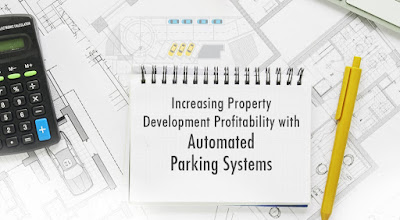Property and real estate developers have started integrating automated parking systems in their commercial or residential projects due to the various challenges faced by them. Some of these challenges are the ever increasing population of vehicles on the road today, the growing number of vehicles owned by a single family, shortage of land, profitability and project feasibility.
Automated parking solutions offer higher cost efficiency. It reduces the operational costs as well as construction costs. Being built vertical, the system demands lesser land space, hence reducing the land costs. It requires very minimal lighting, maintenance, cleaning, staff, etc to be operational. It is generally easier and faster to construct within a space as compared to a conventional garage.
Automated parking systems provide ample advantages to the citizens or users such as more parking space, safety, convenience, etc. But there are also several benefits of these systems for the developer as well.
Following are the factors that increase property development profitability for the developers when they use automated parking systems:
Lower Operating & Maintaining Cost:
A traditional parking space, where users have to park their vehicles themselves, typically requires certain amenities such as lights, ventilation systems, maintenance and regular cleaning. Because of the automated parking system’s architecture, these amenities are not required as the users are removed from the vehicles before placing the cars in the desired parking space. Due to this, there isn’t any need for lighting and ventilation systems.
Also, these systems do not require a lot of staff to run; 1-2 operators can manage the entire system. This saves costs on salaries and maintenance.
Increased Land Space:
As this system is built for cars to be parked vertically on levels, there is a significant difference in the amount of land used as compared to a regular parking space. The flexibility that the automated parking system offers enables the developer to build parking where traditional parking spaces may not fit, and also offer more availability.
Unlike traditional parking spaces, the auto parking system does not require the extra space that is generally used to navigate around until a convenient parking spot is identified. This enables the builder to develop the saved space for other uses, such as green space or saleable amenities.
Sustainable Building
Along with the reduction of toxic gas emissions, there are several other factors that make automated parking a sustainable solution.
As the automated parking system uses lesser area and is built and installed above and below the ground level, the drilling, digging or breaking ground is substantially lesser than what conventional parking space would need. Because of this, there is no need to cut down trees and nearby ecosystems, obstruct any roads that may also lead to congestions and use heavy amount of concrete. These systems are built using recyclable materials such as steel, and are built on a completely metal frame.
Additionally, since these automatic systems use minimal electricity, developers can provide sustainable energy through solar panels.
Low Risk
Users are greatly cautious about the safety of their cars in conventional parking systems due to lower security. The user may have second thoughts about entering the building as well.
Automated parking systems reduce the chances of any serious issues such as accidents, thefts, vandalism, dents, scratches, etc. that would make the developer incur heavy losses due to insurance policies. The safety of the vehicles and users significantly increases, as compared to a conventional parking space.
Lower Building Cost
This is probably the greatest factor for increasing property development profitability for the developer when it comes to implementation of automated parking systems.
Automated parking systems require less raw building materials than traditional parking lots. The entire architecture is built on a metal frame made of steel. Because of this, it also takes less time to build one. The most impressive factor of these systems is that even if they require lesser building material and volume, it houses almost double the number of cars that a regular system would have.
As the building material for the automated system is made of metal, it can easily be recycled or reused in another space if required, which significantly reduces the costs for the developer.
Considering these factors, developers have now started using automated parking systems in their commercial and even residential projects, to maximize their profits and provide ample parking spaces at the same time. These systems are the future of car parking systems in India.

